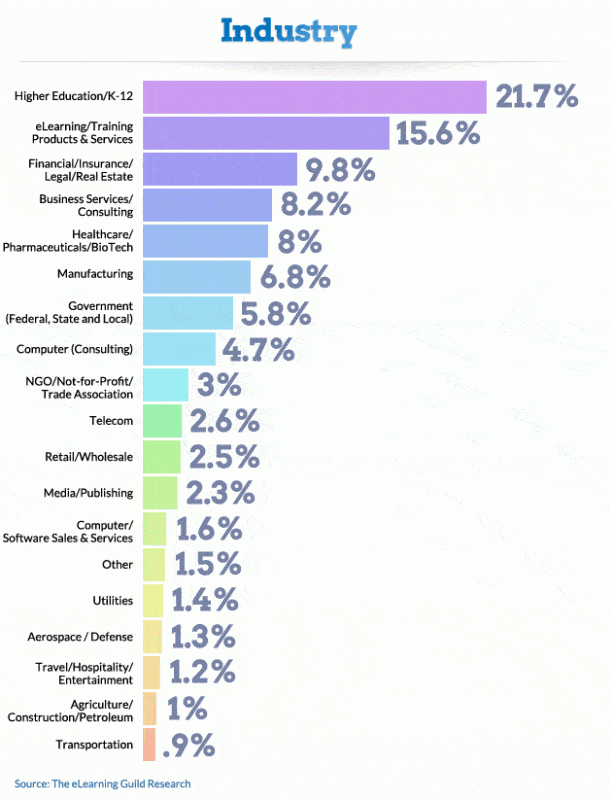LMS and VLE: The Important Distinction
Naming schemes are vital when working in online or computer-based environments. I learned that the hard way after having to rename every piece of learning content on our system after migrating it to another, because it all got jumbled around and put in the wrong order.
Nomenclature can be confusing in IT, just look at Intel’s confounding naming system for its CPUs - both i5s and i7s come in 2 or 4 core configurations, the old Core 2 Duo sounds like it should have 4 cores but it only had 2. Or look at the way Microsoft goes back and forth between dates, names and numbers in their software releases, such as Windows 2000, XP, Vista, 7 and 8.
While working as the administrator for several different eLearning platforms which were used by a large chain of English language schools, I was often perplexed by the multitude of acronyms for them and this rather arbitrary naming scheme caused a great deal of confusion.
I worked for the Learning Innovations team and we had several systems spanning the various educational programs that we offered. We had one Moodle-based system for the language students who were studying in schools in the UK, USA and Australia. This was designed as a place for them to practice English in their own time outside of school – referred to as an Online Self-Access Centre (OSAC) (Pinner, 2011).
We were also developing another system which would connect all the schools and provide purely online courses for students who were still in their home countries, a commercial product produced by e2Train called Kallidus. To enable online classrooms we also used Adobe Connect which we linked up with Kallidus. I was forever logging into one system or the other, visiting the back-end and puzzling over the architecture. It was confusing, having two systems, and my job was to make it as simple as possible for the users.
When we were using Kallidus, the commercial product, we referred to it as a Learning Management System (LMS). To distinguish it from the LMS, when using Moodle we referred to this as the Virtual Learning Environment (VLE). Moodle itself is actually an acronym for Modular Object-Oriented Dynamic Learning Environment. Moodle has been called a multitude of things, from Course Management System (also Content Management System) and Learning Course Management System through to Virtual Learning Environment. Wikipedia defines the terms as pertaining to the same thing, although it recommends VLE above LMS because of the confusion with Library Management System. Although I have seen articles that view LMS and VLE as essentially the same thing, I believe that there is an important distinction.
In this article I will explain why each term has important connotations for the educational approach which they inherently advocate in their design, development trajectory and implementation.
As I mentioned, the Kallidus LMS was produced by a company called e2Train. We chose Kallidus because it had been amongst the top of the eLearning Guild’s annual report for several years. The eLearning Guild’s report ranks the various LMSs available according to certain criteria such as user friendliness, content authoring and reporting functions. The eLearning Guild is a respectable and highly professional organization, but mainly they represent a side of the eLearning industry which is more corporate and training based than educational.
There is an important distinction between education and training (Barnes, 2014) and this is vital when looking at the difference between LMS and VLE. The basic difference between the two is that training is more mechanical, more to do with compliancy and the proven demonstration of skill sets. Education is a broader term, more associated with the act of learning having been facilitated rather than skills which have been taught. A quick look at the statistics of the eLearning Guild’s clients makes it clear that eLearning and LMSs are used much more broadly than just for university or school learning platforms. Although Higher Education and K-12 are the highest single industry at 21.7%, the remaining 78.3% are made up of other industries such as Finance, Business Services and Manufacturing, most likely for training and continual professional development (CPD) purposes (eLearning Guild, 2014).
Microsoft’s Web Content Management System, SharePoint, presents a similar pattern when visiting their list of clients. Colleges are juxtaposed with non-educational bodies such as insurance companies, healthcare, manufacturing, telecommunications as well as Financial and Legal Services. Microsoft reports that 78% of Fortune 500 (TechNet Magazine, 2011 ) companies are using SharePoint, clearly showing a business preference.
From this, we can see that many companies are using LMSs for training and CPD, with educational institutions making up just a small part of this. While this reflects that eLearning is truly an important and influential area, it also brings me to the conclusion that many commercial LMSs are being designed and implemented primarily for training and in-house staff development, rather than education. Businesses use their LMS mainly for mandatory CPD and they tend to be internal rather than client-facing, or used by students. This is why I believe there is a fundamental difference between a VLE and an LMS, and the terms reflect a very different approach to learning.
VLEs such as Moodle are characterized by constructivist approaches, their main intended use being a place to collaborate and extend discussions as oppose to hosting trackable learning objects. Martin Dougiamas, the founder of Moodle, based the development on constructivist theories and this fact is still stated on the About pages at moodle.org (2014).
The other main educational VLE, Blackboard, mentions on its site that it aims to keep ‘students informed, involved, and collaborating together’ (BlackBoard, 2014), again echoing constructivist and collaborative principles. However, Blackboard calls itself an LMS which highlights the confusion around the terms in the industry.
Although many VLEs and LMSs have the same features, such as forums, quiz authoring suites and reporting systems, in my view it is the way they are being used that distinguishes them. It is possible to use a Moodle, for example, for purely behaviourist type mechanical drills and compliancy training and thus it becomes an LMS through the way it is used. However, out of the box, a VLE or an LMS are not the same thing, since the development trajectory will reflect the main client needs and learning paradigm.
The reason I am making this distinction is that I still see a lot of ambiguity about the terminology in eLearning, perhaps due to its relative infancy as a discipline. I have seen institutions make the wrong choice when considering commercial LMSs and VLEs and I blame the lack of precise definition for this.
As a technology enthusiast, I am a great believer that we should provide students and teachers with the latest resources in instructional technology. However, institutions should be aware of how they intend to implement them. With VLEs for example, while the online format means greater access for students and the possibility for flash animations and embedded video/audio means more involving learning content, at the end of the day we should avoid simply giving students increased access to yet more trackable learning objects, connected mainly with CPD and accreditation. No matter how good such activities look, they still fall under the educational category of behaviourism.
As I have tried to demonstrate, the way we use a VLE or LMS is their most defining feature. However, some systems are designed and developed more specifically to be an LMS than a VLE, and I would argue that this distinction is important when institutions are choosing what platform to implement. I would suggest that we try to agree on a terminology for these two systems because of the very different pedagogic principles they both represent. Whereas an LMS is a valuable resource for accreditation, CPD and in-house training, I think that educational institutions would favor a VLE because they offer students a more collaborative and personal approach to achieving their educational goals.
References
Barnes, C. (2014). Education and Training - What’s the difference? Retrieved from https://elearningindustry.com/education-and-training-what-is-the-difference
BlackBoard. (2014). A Learning Management System that Brings Your Vision to Life. Retrieved 13th August, 2014, from http://www.blackboard.com/platforms/learn/overview.aspx
eLearning Guild. (2014). About Guild Members. Retrieved 13th August, 2014, from http://www.elearningguild.com/content.cfm?selection=doc.65
Moodle.org. (2014, 2 August 2014, at 18:54). About Moodle. Retrieved 13th August, 2014, from http://docs.moodle.org/27/en/About_Moodle
Pinner, R. S. (2011). A Two Year Cross-Section of Student Use of Self-Access eLearning. Studies in self-access learning, 2(3), 30 -34.
TechNet Magazine. (2011 April 2011). SharePoint 2010 : The First 10 Years. Retrieved 13th August, 2014, from http://technet.microsoft.com/en-us/magazine/gg981684.aspx


